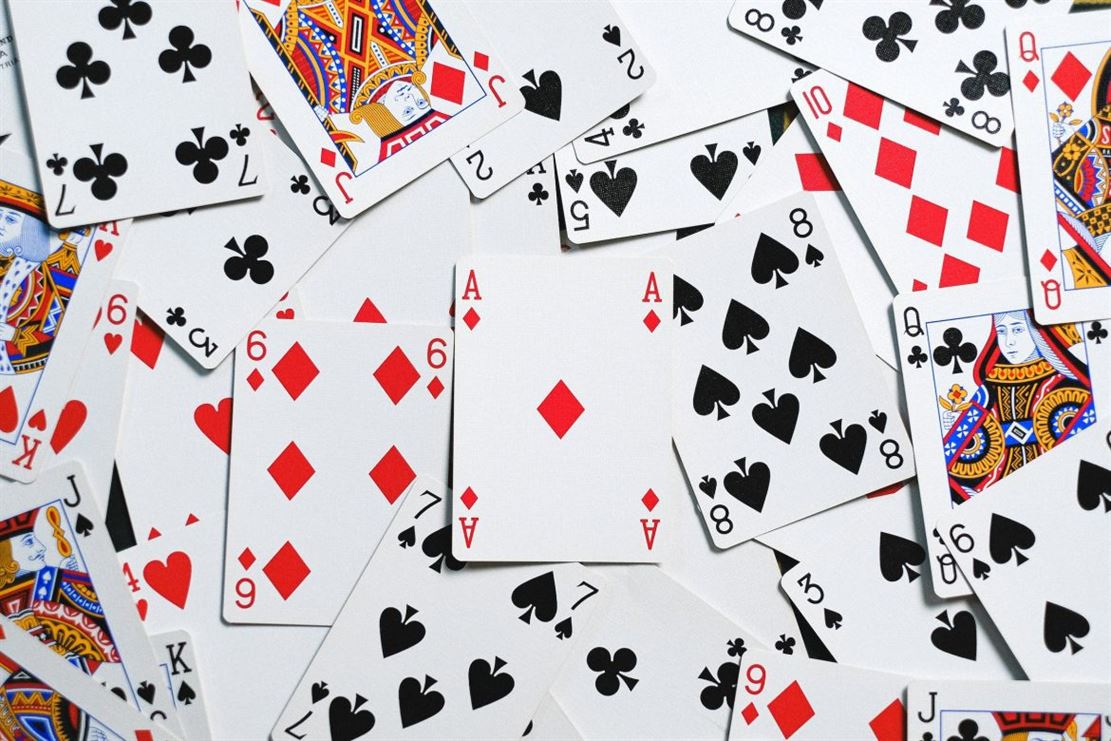The game of poker has a rich and fascinating history that spans several centuries. Originating in various forms in different parts of the world, poker gradually evolved into the popular card game we know today. Over time, it gained widespread popularity and became a worldwide phenomenon. This article explores the history of poker, tracing its roots and examining the factors that contributed to its global appeal.
The Origins of Poker: Tracing its Roots
The game of poker has become a worldwide phenomenon, captivating millions of players from all walks of life. But how did this game, with its roots deeply embedded in history, evolve into the beloved pastime it is today? To understand the journey of poker, we must first trace its origins.
Poker’s beginnings can be traced back to the early 19th century in the United States. However, its true origins are shrouded in mystery, with various theories and legends surrounding its birth. One popular belief is that poker originated from a Persian game called “As Nas,” which was brought to America by French settlers. As Nas involved a 20-card deck and betting rounds, much like modern-day poker.
Another theory suggests that poker evolved from the French game “Poque,” which was played in the 17th century. Poque involved bluffing and betting, elements that are integral to poker. French settlers in New Orleans are said to have introduced this game to the United States, where it gradually gained popularity.
Regardless of its exact origins, poker quickly spread across the United States, becoming a favorite pastime among cowboys, gamblers, and saloon-goers. It was during the mid-19th century that the game began to take on its modern form, with the introduction of a 52-card deck and the concept of five-card hands.
The next significant milestone in poker’s history came with the advent of the internet. In the late 1990s, online poker platforms emerged, allowing players from all over the world to compete against each other in virtual poker rooms. This revolutionized the game, making it more accessible and convenient than ever before. Players no longer had to travel to physical casinos or gather around a table; they could now enjoy the thrill of poker from the comfort of their own homes.
The popularity of online poker skyrocketed, attracting a new generation of players who were drawn to the game’s strategic and competitive nature. Online poker tournaments, such as the World Series of Poker, gained immense popularity, offering players the chance to win substantial cash prizes and gain recognition in the poker community.
As poker continued to evolve, so did the strategies and techniques employed by players. The game became more than just luck; it required skill, mathematical calculations, and psychological prowess. Players began studying the game, analyzing statistics, and developing strategies to gain an edge over their opponents. This led to the rise of professional poker players, who became celebrities in their own right.
Today, poker is not only a game but also a global industry. It has transcended cultural boundaries, with players from all corners of the world participating in tournaments and cash games. The game’s popularity has been further fueled by televised poker events, which have brought the excitement and drama of the game into living rooms worldwide.
In conclusion, the game of poker has a rich and fascinating history that spans centuries. From its mysterious origins to its evolution into a global phenomenon, poker has captivated players with its blend of skill, strategy, and luck. As the game continues to evolve, one thing is certain: poker will remain a beloved pastime for generations to come.
Early Variations of Poker: From Primero to Brag
Poker, a game that has captured the hearts and minds of millions around the world, has a rich and fascinating history that dates back centuries. From its humble beginnings to its current status as a worldwide phenomenon, the game of poker has evolved and adapted over time, captivating players with its blend of skill, strategy, and luck.
The origins of poker can be traced back to the early 16th century, where a game called Primero was popular in Europe. Primero, a three-card game, involved betting and bluffing, much like modern-day poker. Players would strive to achieve the highest-ranking hand, with combinations such as three of a kind and a flush being highly valued. Primero quickly gained popularity and spread throughout Europe, becoming a favorite pastime among the nobility.
As the game continued to evolve, new variations emerged. One such variation was Brag, which gained popularity in England during the 18th century. Brag, similar to Primero, involved betting and bluffing, but with a few key differences. Instead of three cards, players were dealt three cards face down and had the option to replace one or more of their cards with new ones from the deck. This added an element of strategy and skill to the game, as players had to carefully consider which cards to discard and which to keep.
The game of poker as we know it today began to take shape in the early 19th century in the United States. It was during this time that the concept of a 52-card deck was introduced, along with the inclusion of five-card hands. This new version of poker quickly gained popularity, spreading across the country and becoming a staple in saloons and gambling halls.
During the mid-19th century, poker underwent further transformations. The introduction of the draw feature allowed players to discard and replace cards from their hand, adding yet another layer of strategy to the game. This innovation, along with the development of various hand rankings, solidified poker’s place as a game of skill and chance.
The game continued to evolve throughout the 20th century, with the introduction of new variations such as Texas Hold’em and Omaha. These variations brought new levels of excitement and complexity to the game, attracting a wider audience and cementing poker’s status as a worldwide phenomenon.
In recent years, the popularity of poker has skyrocketed, thanks in large part to the advent of online poker. The ability to play poker from the comfort of one’s own home, at any time of day or night, has made the game more accessible than ever before. Online poker has also allowed players from around the world to compete against each other, further fueling the game’s global appeal.
Today, poker is played by millions of people worldwide, both in casinos and online. It has become a cultural phenomenon, with professional poker players achieving celebrity status and major tournaments attracting massive audiences and multimillion-dollar prize pools. The game’s blend of skill, strategy, and luck continues to captivate players of all ages and backgrounds, ensuring that poker will remain a beloved pastime for generations to come.
In conclusion, the game of poker has a long and storied history that spans centuries. From its early variations of Primero and Brag to its current status as a worldwide phenomenon, poker has evolved and adapted over time, captivating players with its unique blend of skill, strategy, and luck. Whether played in a smoky saloon or on a computer screen, poker continues to bring people together and provide endless hours of entertainment.
Poker in the Wild West: The Game of Outlaws and Cowboys
Poker, a game of skill, strategy, and chance, has a rich and fascinating history that spans centuries. From its humble beginnings in Europe to its rise as a worldwide phenomenon, poker has captivated players and spectators alike. One particular era that stands out in the history of poker is the Wild West, where the game became synonymous with outlaws and cowboys.
In the late 19th century, as settlers moved westward in search of fortune and adventure, poker found its way into saloons and gambling halls. The game quickly gained popularity among the rough and tumble crowd of the Wild West. Outlaws and cowboys, seeking excitement and a chance to win big, flocked to these establishments, making poker a staple of their daily lives.
Poker in the Wild West was not for the faint of heart. It was a game of high stakes, where fortunes could be won or lost in a single hand. The atmosphere in these saloons was electric, with smoke-filled rooms, dimly lit by flickering lanterns, and the sound of chips clinking and cards being shuffled. It was a world where danger lurked around every corner, and poker was the ultimate test of skill and nerve.
The players who frequented these establishments were a colorful bunch. Legendary figures such as Wild Bill Hickok, Doc Holliday, and Bat Masterson were known to be skilled poker players. They were not only skilled with a gun but also with a deck of cards. These men, with their quick wits and sharp eyes, could read their opponents like a book, making them formidable opponents at the poker table.
Cheating was not uncommon in these Wild West poker games. Players would resort to all sorts of tricks to gain an advantage. From marking cards to hiding aces up their sleeves, these outlaws and cowboys would stop at nothing to win. However, those caught cheating often faced dire consequences, ranging from being tarred and feathered to being run out of town.
Despite the dangers and the prevalence of cheating, poker in the Wild West was a game that brought people together. It was a social activity that allowed individuals from all walks of life to come together and share a common passion. In these saloons, cowboys rubbed shoulders with miners, and outlaws played alongside lawmen. The poker table was a great equalizer, where everyone had a chance to prove their mettle.
As the Wild West era came to an end, poker continued to evolve and spread its influence across the United States and beyond. The game became more refined, with standardized rules and regulations. Tournaments and championships were organized, attracting players from all over the world. Poker became a game of skill and strategy, where luck played a role but was not the sole determinant of success.
Today, poker is played in casinos, online platforms, and even in the comfort of one’s own home. It has become a worldwide phenomenon, with millions of players and spectators participating in the game. The Wild West may be a thing of the past, but its legacy lives on in the game of poker. The spirit of the outlaws and cowboys who once roamed the frontier can still be felt at the poker table, where skill, strategy, and a little bit of luck can lead to victory.
The Evolution of Poker: From Five-Card Stud to Texas Hold’em
The game of poker has a rich and fascinating history that spans centuries. From its humble beginnings as a simple card game played in saloons and gambling dens, poker has evolved into a worldwide phenomenon that captivates millions of players. One of the key factors in the game’s evolution is the transition from Five-Card Stud to Texas Hold’em.
Five-Card Stud, the predecessor of modern poker, was the game of choice in the early 19th century. It was a straightforward game, where each player was dealt five cards, and the goal was to have the best hand. However, as the game gained popularity, players began to crave more excitement and strategic depth.
Enter Texas Hold’em, the game that would revolutionize poker. It is believed to have originated in the early 20th century in the state of Texas, hence its name. Texas Hold’em introduced a new element of strategy by incorporating community cards, which are shared by all players. This meant that players had to not only consider their own cards but also the possibilities created by the community cards.
The introduction of community cards in Texas Hold’em opened up a whole new world of possibilities for players. It added an element of suspense and unpredictability to the game, as players had to constantly reassess their hand based on the community cards that were revealed. This made Texas Hold’em a much more dynamic and strategic game than its predecessor.
The popularity of Texas Hold’em skyrocketed in the 1970s when it was featured in the World Series of Poker (WSOP), the most prestigious poker tournament in the world. The WSOP became a platform for showcasing the skills and talents of the best poker players, and Texas Hold’em quickly became the game of choice for professionals and amateurs alike.
The rise of the internet in the late 20th century further fueled the popularity of Texas Hold’em. Online poker rooms allowed players from all over the world to compete against each other, breaking down geographical barriers and creating a global poker community. This accessibility and convenience contributed to the exponential growth of the game, turning it into a worldwide phenomenon.
Today, Texas Hold’em is the most widely played variant of poker, both in live casinos and online. Its popularity can be attributed to its strategic depth, the excitement it generates, and the skill required to master the game. The World Series of Poker continues to be a major event in the poker world, attracting thousands of players from all corners of the globe.
In conclusion, the evolution of poker from Five-Card Stud to Texas Hold’em has played a significant role in making the game a worldwide phenomenon. The introduction of community cards in Texas Hold’em added a new level of strategy and excitement, making it a more dynamic and engaging game. The popularity of Texas Hold’em was further fueled by its inclusion in the World Series of Poker and the advent of online poker rooms. Today, Texas Hold’em remains the game of choice for poker enthusiasts around the world, cementing its status as a timeless classic.
Poker Goes Global: Spreading the Game Across Continents
Poker, a game that has captured the hearts and minds of millions around the world, has a rich and fascinating history. From its humble beginnings in the United States to its global reach today, poker has evolved into a worldwide phenomenon that transcends borders and cultures. In this section, we will explore how poker made its way across continents, captivating players from all walks of life.
The origins of poker can be traced back to the early 19th century in the United States. It was a game that was primarily played in saloons and riverboats, where cowboys and gamblers would gather to test their luck and skill. As the game gained popularity, it began to spread across the country, with different variations and rules emerging in different regions.
However, it wasn’t until the late 19th century that poker truly began to make its mark on the international stage. With the advent of steamships and railways, the game was able to travel beyond the borders of the United States, reaching new audiences in Europe, Asia, and beyond. It was during this time that poker started to take on a more standardized form, with the introduction of the modern deck of cards and the ranking of hands.
In Europe, poker found a particularly receptive audience. The game quickly gained popularity in countries like France, Germany, and England, where it was embraced by both the aristocracy and the working class. Poker became a staple in social gatherings and was often played in exclusive clubs and private homes. The European influence on poker can still be seen today, with many of the game’s most popular variations, such as Texas Hold’em and Omaha, originating from this region.
In Asia, poker took on a different flavor. The game was introduced to countries like China and Japan through trade and colonization, and it quickly became integrated into the local culture. In China, for example, poker was often played with dominoes instead of cards, giving rise to a unique variation known as “Chinese poker.” In Japan, the game was embraced by the yakuza, the country’s organized crime syndicates, who saw poker as a way to test their cunning and strategy.
As the 20th century progressed, poker continued to spread its influence across the globe. It found a new home in Latin America, where it became a popular pastime in countries like Argentina, Brazil, and Mexico. In Africa, poker gained traction in countries like South Africa and Nigeria, where it was embraced by both locals and expatriates.
The advent of the internet in the late 20th century further accelerated the global reach of poker. Online poker platforms allowed players from different continents to compete against each other in real-time, breaking down geographical barriers and creating a truly global poker community. Today, poker tournaments attract players from all corners of the world, with millions of dollars in prize money up for grabs.
In conclusion, the game of poker has come a long way since its humble beginnings in the United States. From saloons and riverboats to exclusive clubs and online platforms, poker has transcended borders and cultures, captivating players from all walks of life. Its journey across continents has shaped the game into the worldwide phenomenon it is today, with millions of enthusiasts eagerly participating in the timeless pursuit of luck and skill.
The Rise of Online Poker: How Technology Transformed the Game
The game of poker has a long and storied history, with its origins dating back to the early 19th century in the United States. Over the years, it has evolved and transformed into the worldwide phenomenon that it is today. One of the key factors that contributed to its rise in popularity is the advent of online poker, which revolutionized the way the game is played and experienced.
In the early days, poker was primarily played in smoky backrooms and dimly lit saloons, where players would gather around a table, armed with a deck of cards and their wits. It was a game of skill, strategy, and psychology, where players would bluff, bet, and raise in an attempt to outsmart their opponents and win the pot. However, the game was limited to those who had access to physical poker rooms and opponents to play against.
Then came the internet, and with it, the birth of online poker. The first online poker room was launched in the late 1990s, and it quickly gained traction among players who were looking for a convenient and accessible way to play the game. Suddenly, anyone with an internet connection could log on to a virtual poker room and join a game, regardless of their location or time zone.
The rise of online poker was fueled by several factors. Firstly, it offered a level of convenience that traditional poker could not match. Players no longer had to travel to a physical location to play a game; they could simply log on to their computers or mobile devices and start playing. This opened up the game to a whole new audience, including those who may not have had the means or opportunity to play in a traditional poker room.
Secondly, online poker provided a level of anonymity that was not possible in a physical setting. Players could create a username and play under a pseudonym, shielding their true identity from their opponents. This allowed for a more level playing field, as players were judged solely on their skills and strategies, rather than their appearance or reputation.
Furthermore, online poker introduced a range of new features and innovations that enhanced the overall gaming experience. Players could choose from a wide variety of game types and formats, including cash games, tournaments, and sit-and-gos. They could also take advantage of features such as hand histories, player notes, and real-time statistics, which provided valuable insights and information to help improve their game.
The popularity of online poker skyrocketed in the early 2000s, thanks in part to the televised coverage of major poker tournaments, such as the World Series of Poker. These broadcasts showcased the excitement and drama of the game, and inspired a new generation of players to try their hand at online poker.
Today, online poker is a thriving industry, with millions of players from around the world participating in games and tournaments on a daily basis. It has become a global phenomenon, with players competing for millions of dollars in prize money and earning fame and recognition in the process.
In conclusion, the rise of online poker has transformed the game from a niche pastime to a worldwide phenomenon. It has made the game more accessible, convenient, and exciting, attracting a new generation of players and revolutionizing the way poker is played and experienced. As technology continues to advance, it will be fascinating to see how online poker evolves and shapes the future of the game. In conclusion, the game of poker has evolved over centuries and has become a worldwide phenomenon due to various factors. Its origins can be traced back to different card games played in different regions, including Europe and Asia. The game gained popularity in the United States during the 19th century, particularly during the Gold Rush era. The introduction of standardized rules and the development of poker tournaments further contributed to its global appeal. The advent of online poker platforms and televised poker events also played a significant role in spreading the game’s popularity worldwide. Today, poker is enjoyed by millions of people across the globe, both in physical casinos and online, making it a truly global phenomenon.




